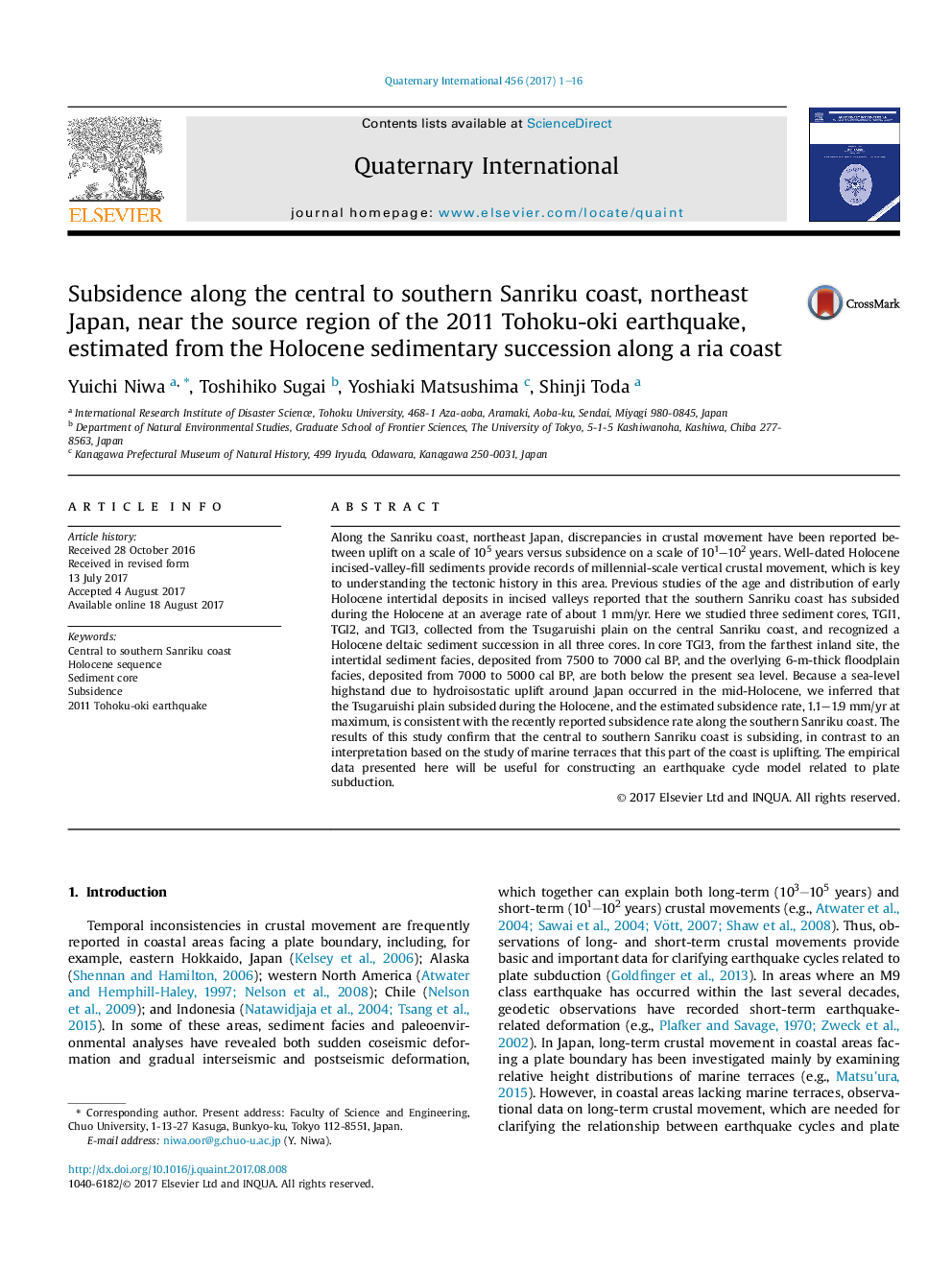| Article ID | Journal | Published Year | Pages | File Type |
|---|---|---|---|---|
| 7451238 | Quaternary International | 2017 | 16 Pages |
Abstract
Along the Sanriku coast, northeast Japan, discrepancies in crustal movement have been reported between uplift on a scale of 105 years versus subsidence on a scale of 101-102 years. Well-dated Holocene incised-valley-fill sediments provide records of millennial-scale vertical crustal movement, which is key to understanding the tectonic history in this area. Previous studies of the age and distribution of early Holocene intertidal deposits in incised valleys reported that the southern Sanriku coast has subsided during the Holocene at an average rate of about 1Â mm/yr. Here we studied three sediment cores, TGI1, TGI2, and TGI3, collected from the Tsugaruishi plain on the central Sanriku coast, and recognized a Holocene deltaic sediment succession in all three cores. In core TGI3, from the farthest inland site, the intertidal sediment facies, deposited from 7500 to 7000Â cal BP, and the overlying 6-m-thick floodplain facies, deposited from 7000 to 5000Â cal BP, are both below the present sea level. Because a sea-level highstand due to hydroisostatic uplift around Japan occurred in the mid-Holocene, we inferred that the Tsugaruishi plain subsided during the Holocene, and the estimated subsidence rate, 1.1-1.9Â mm/yr at maximum, is consistent with the recently reported subsidence rate along the southern Sanriku coast. The results of this study confirm that the central to southern Sanriku coast is subsiding, in contrast to an interpretation based on the study of marine terraces that this part of the coast is uplifting. The empirical data presented here will be useful for constructing an earthquake cycle model related to plate subduction.
Related Topics
Physical Sciences and Engineering
Earth and Planetary Sciences
Geology
Authors
Yuichi Niwa, Toshihiko Sugai, Yoshiaki Matsushima, Shinji Toda,
